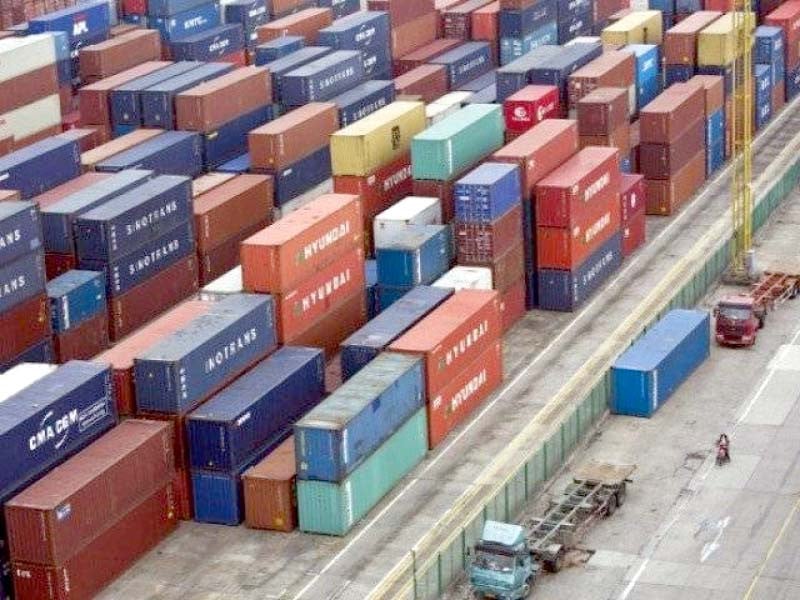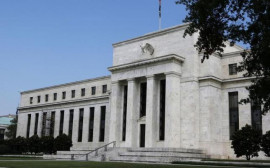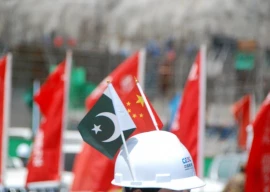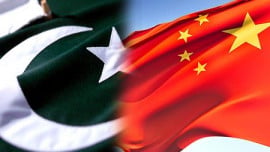
In the complex realm of economic governance, Ludwig von Mises’ timeless assertion resonates: “If one rejects laissez-faire on account of man’s fallibility and moral weakness, one must, for the same reason, also reject every kind of government action.”
Within this philosophical framework, Pakistan grapples with multifaceted economic challenges, demanding a sophisticated approach to trade policies.
Protectionism, utilising tools like tariffs, non-tariff barriers, and subsidies, aims to shield domestic industries. However, the prevalent advocacy for import substitution in the current economic crisis reflects a misunderstanding of the foundational principle of international trade based on comparative advantage.
The discourse favouring import substitution is unproductive and uncompetitive, leading to inefficiencies and elevated prices. The solution lies in export-led growth, focusing on key sectors with a comparative advantage and creating localised linkages.
In 2022, Pakistan’s trade policies demonstrate a sophisticated stance on tariffs, with a high applied rate of 98.6%, posing challenges highlighted by the WTO. Examining specific product groups reveals limited duty-free imports and varied tariffs, notably for machinery and chemicals.
Analysis of Most Favoured Nation (MFN) applied duties in Pakistan, India, and Bangladesh underscores the impact of protectionist measures beyond duty rates, affecting the economy. While lower duties in sectors like cotton suggest open trade benefits, a careful balance is crucial to avoid inefficiencies and missed global opportunities.
Pakistan faces economic challenges evident in performance indicators. Starting with $4.5 billion in foreign exchange reserves this financial year, an 81% depreciation of the rupee over the past two years, and external debt nearly reaching $128 billion (43% of GDP), the economic strain is evident.
A projected $55 billion in financing requirement from 2023-26 adds to concerns, with a mounting budget deficit, declining tax-to-GDP ratio, reduced development spending, and stark income inequality. Unemployment has risen to 9.5%, potentially exceeding 20% unofficially, and projected poverty rates stand at 46%, affecting over 20 million youth. An unevenly distributed tax burden, contributing to an overall tax incidence of below 10% of GDP, emphasises the need for balanced policies.
The industrial sector faces decline and signs of deindustrialisation amid the 2022-23 economic crisis, leading to the permanent closure of numerous firms, especially in textiles and apparel. Escalating energy costs, inflation, and exchange rate depreciation intensify the contraction of industrial production, emphasising the urgent need for Pakistan to shift to an export-centric approach, given annual gross external financing requirements set to exceed $25 billion for the next five years.
The World Bank emphasises the need for a new consensus on global rules to address international tensions and benefit all countries. The issue is not excessive globalisation but excessively narrow regulation, advocating for global rules covering various aspects beyond trade. Recognising the shortcomings of protectionism and import substitution, the focus on export-led growth becomes crucial. Emphasising the need to boost foreign exchange earnings as an alternative to increasing debt, creating an open and competitive global trade environment is vital for stabilising industries, fostering growth, and providing opportunities for market diversification.
Tariffs on PSF
Pakistan’s textile industry, historically significant, faces challenges, witnessing a decline in contribution and employment trends amid the economic crisis in 2022-23.
The imposition of tariffs and protectionist measures on polyester staple fibre (PSF) adversely affects the textile industry’s global competitiveness. Despite increasing global demand for synthetic fibres, particularly polyester, Pakistan’s textile industry has been slow to shift from conventional cotton, limiting its share in the expanding market for synthetic textiles.
Read Silk Road, textile summit to boost global trade
Garment exports still favour cotton at an 80:20 ratio, with only a quarter of spinning machines utilising man-made fibres (MMF).
The concentration of global PSF production in countries like China, India, and Southeast Asia, dominating synthetic textile exports, highlights Pakistan’s limited participation in the MMF apparel market.
Protectionist policies and the absence of a fully integrated chemical industry for synthetic polymers hinder Pakistan’s progress in this sector. Adequate raw material availability could boost the country’s share in the global synthetic textiles market, but domestic policies influenced by protectionist measures impede tapping into this potential.
To boost Pakistan’s textile industry, eliminating the 12% customs duty on polyester filament yarn (PFY) and ensuring no import duty on this crucial raw material is essential. Aligning withholding tax (WHT) and abolishing the 3% value addition tax (VAT) at the import stage for PFY is vital.
The current policy, with total import duties reaching 20%, including antidumping duty, hampers PFY industry growth and raises costs for end-users.
On the other hand, to enhance global competitiveness, Pakistani manufacturers must build industry capacity for producing textile articles based on MMF, recognising the growing demand in the global market for synthetic fibres (MMF) over traditional cotton articles.
Unfortunately, Pakistan struggles to fully leverage benefits from initiatives like GSP+ due to an economy heavily reliant on textiles and a lack of awareness and interest among traders, impeding the country’s ability to exploit the full advantages of such programmes.
Protectionism in agriculture
Protectionist policies in Pakistan’s agriculture sector, aimed at bolstering local farmers and ensuring food security, face limitations in achieving their goals.
Contrary to expectations, gains from agricultural trade liberalisation surpass those from protectionism. Many studies suggest that protectionist measures have not significantly benefited Pakistani farmers, with richer rural households reaping more substantial rewards under trade liberalisation.
Concerns about income distribution among vulnerable populations, particularly poor rural households, challenge the assumption that protectionism leads to improved food security.
Moreover, the implications of protectionism extend to international trade relationships. While protectionist measures aim to shield domestic agriculture, exposing the sector to foreign competition through liberalisation may result in concerns about market access and potential losses for less-developed countries.
Despite marginal economic growth, protectionist policies in Pakistan have not effectively addressed income inequality as they often benefit select industries and contribute to higher prices, disproportionately impacting lower-income individuals and hindering overall economic growth and job creation. The need for a distinct approach that considers welfare, income distribution, and global trade dynamics is emphasised when evaluating the efficacy of trade policies in the agriculture sector.
Shahid Sattar has served as member energy of the Planning Commission and has also been an adviser at the Ministry of Finance, Ministry of Petroleum and Ministry of Water and Power
Amna Urooj works as a research analyst and has an M Phil in Public Policy from PIDE
Published in The Express Tribune, December 25th, 2023.
Like Business on Facebook, follow @TribuneBiz on Twitter to stay informed and join in the conversation.





1730884134-0/BeFunky-collage-(26)1730884134-0-165x106.webp)




1730963708-0/Express-Tribune-Web-(27)1730963708-0-270x192.webp)










COMMENTS
Comments are moderated and generally will be posted if they are on-topic and not abusive.
For more information, please see our Comments FAQ